Jerk chicken pasta combines the bold, spicy flavors of Jamaican jerk chicken with the comforting familiarity of pasta. The smoky heat of the jerk seasoning paired with the creamy texture of the pasta creates a fusion that is both exciting and satisfying. Jerk chicken pasta is more than just a dish; it’s an experience that brings together diverse culinary traditions.
When I first stumbled upon the idea of jerk chicken pasta, I was both intrigued and skeptical. The thought of combining the bold, spicy flavors of Jamaican jerk chicken with the comforting familiarity of pasta seemed like a culinary adventure waiting to happen. I remember the first time I tried it at a local Caribbean restaurant; the explosion of flavors was unlike anything I had ever experienced.
The smoky heat of the jerk seasoning paired with the creamy texture of the pasta was a match made in heaven. From that moment on, I was determined to recreate this dish in my own kitchen, and I can confidently say that it has become a staple in my meal rotation. Jerk chicken pasta is not just a dish; it’s an experience that brings together diverse culinary traditions.
The vibrant spices of the Caribbean meet the heartiness of Italian cuisine, creating a fusion that is both exciting and satisfying.If you’re planning a dinner party or just want to add some excitement to your weekday dinners, this dish will definitely impress.In this guide, I’ll walk you through each step of the process, sharing tips and personal anecdotes along the way to help you make the ultimate jerk chicken pasta.
Gathering the Ingredients
Learn from My Mistakes
I remember my first attempt at making jerk chicken pasta; I was so eager to start that I overlooked a few key ingredients. As a result, I found myself scrambling around my kitchen mid-recipe, which led to a chaotic cooking experience. Now, I always make a checklist before I begin.
Gather Your Ingredients
For this dish, you’ll need boneless chicken thighs or breasts, jerk seasoning (store-bought or homemade), pasta (I prefer penne or fettuccine), heavy cream, garlic, onion, bell peppers, and fresh herbs like cilantro or parsley for garnish. Don’t forget salt and pepper to taste!
A Delicious and Organized Start
The vibrant colors of these ingredients remind me of a Caribbean sunset, and they promise a delightful explosion of flavors. Once you have everything laid out, you’ll feel more organized and ready to tackle the cooking process.
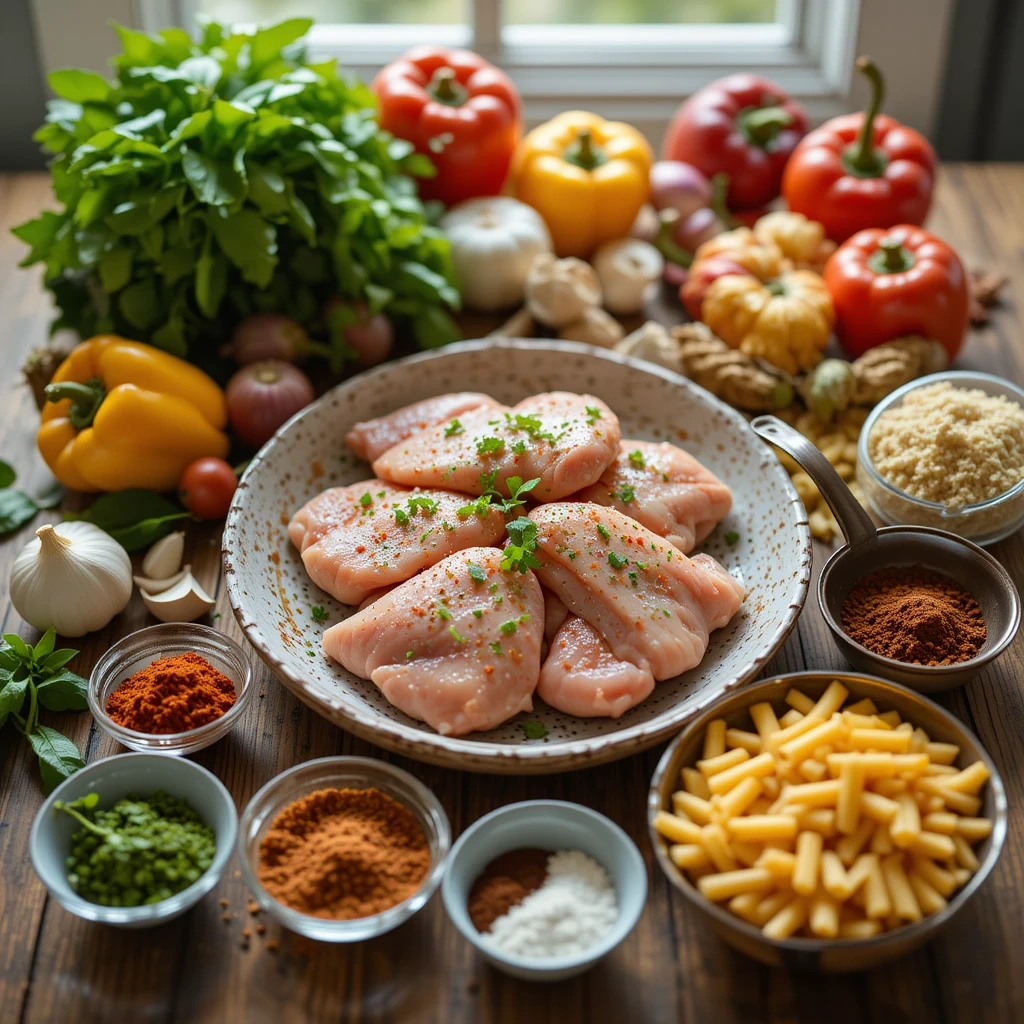
Preparing the Jerk Chicken
Explore a variety of Chicken Tortellini Recipes on Veibrant Recipes, offering creative and flavorful dishes that combine tender chicken with rich, cheesy tortellini. From creamy Alfredo bakes to zesty pesto skillets, these recipes cater to both quick weeknight dinners and special occasions. Each recipe includes step-by-step instructions, ingredient lists, and helpful tips to ensure a delicious meal every time.
Discover the full collection here!
The next step is preparing the jerk chicken, which is where the magic truly begins. If you’re using store-bought jerk seasoning, make sure to read the label for any additional ingredients you might need. However, if you’re feeling adventurous, making your own jerk seasoning can elevate your dish to new heights.
I recall one evening when I decided to whip up my own blend using allspice, thyme, cinnamon, and scotch bonnet peppers. The fragrance that permeated my kitchen was captivating!Once you have your seasoning ready, marinate the chicken for at least an hour—overnight is even better if you have the time.
This enables the flavors to infuse deeply into the meat.. When it’s time to cook, heat a grill pan or skillet over medium-high heat and sear the chicken until it’s cooked through and has those beautiful charred marks. The sizzle of the chicken hitting the pan always brings back memories of summer barbecues with friends and family.
After cooking, let the chicken rest for a few minutes before slicing it into bite-sized pieces.
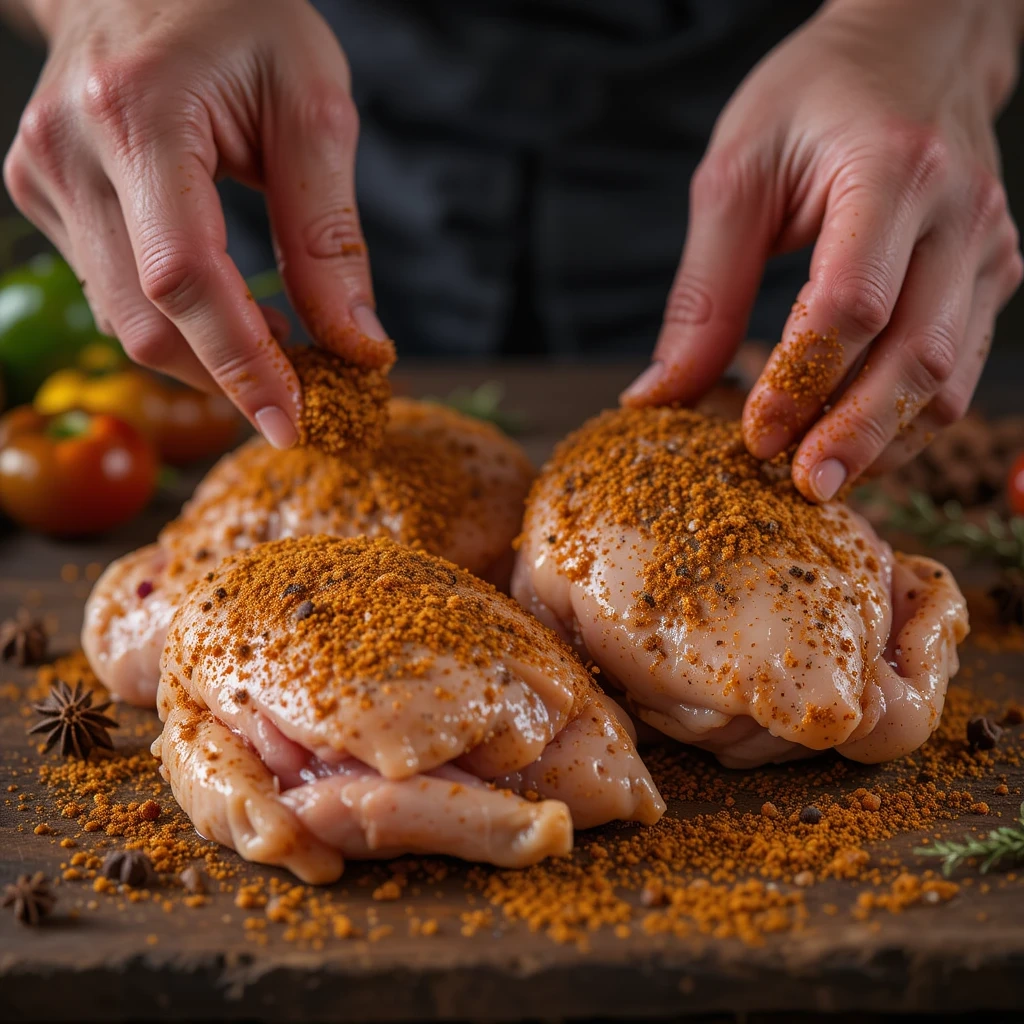
Cooking the Pasta
| Metrics | Results |
|---|---|
| Time to cook | 10 minutes |
| Water to pasta ratio | 4:1 |
| Al dente test | Pasta sticks to the wall when thrown |
| Draining method | Using a colander |
As the chicken rests, it’s the perfect moment to prepare the pasta. Ensure you bring a large pot of salted water to a boil, as this step is essential for adding flavor to your pasta. I learned this lesson the hard way during my early cooking days when I neglected to salt the water and ended up with bland noodles.
When the water reaches a boil, add the pasta and cook it as per the package directions until it is al dente.. As I stirred the pasta in the pot, I couldn’t help but reminisce about family dinners where we would gather around the table, sharing stories and laughter over bowls of spaghetti. Once cooked, reserve a cup of pasta water before draining; this starchy liquid can be a lifesaver when combining everything later on.
Rinse the pasta briefly under cold water to stop the cooking process if you’re not using it immediately; otherwise, let it sit in its pot while you prepare the sauce.
Experience a fiery fusion of Caribbean flavors with the Jerk Chicken and Pasta recipe from Allrecipes. This dish features chicken breasts marinated in spicy jerk paste, grilled to perfection, and served over egg noodles tossed in a zesty sauce made with chicken stock, white wine, garlic, and fresh cilantro. A squeeze of lime adds a refreshing finish to this passionately spicy meal.Allrecipes
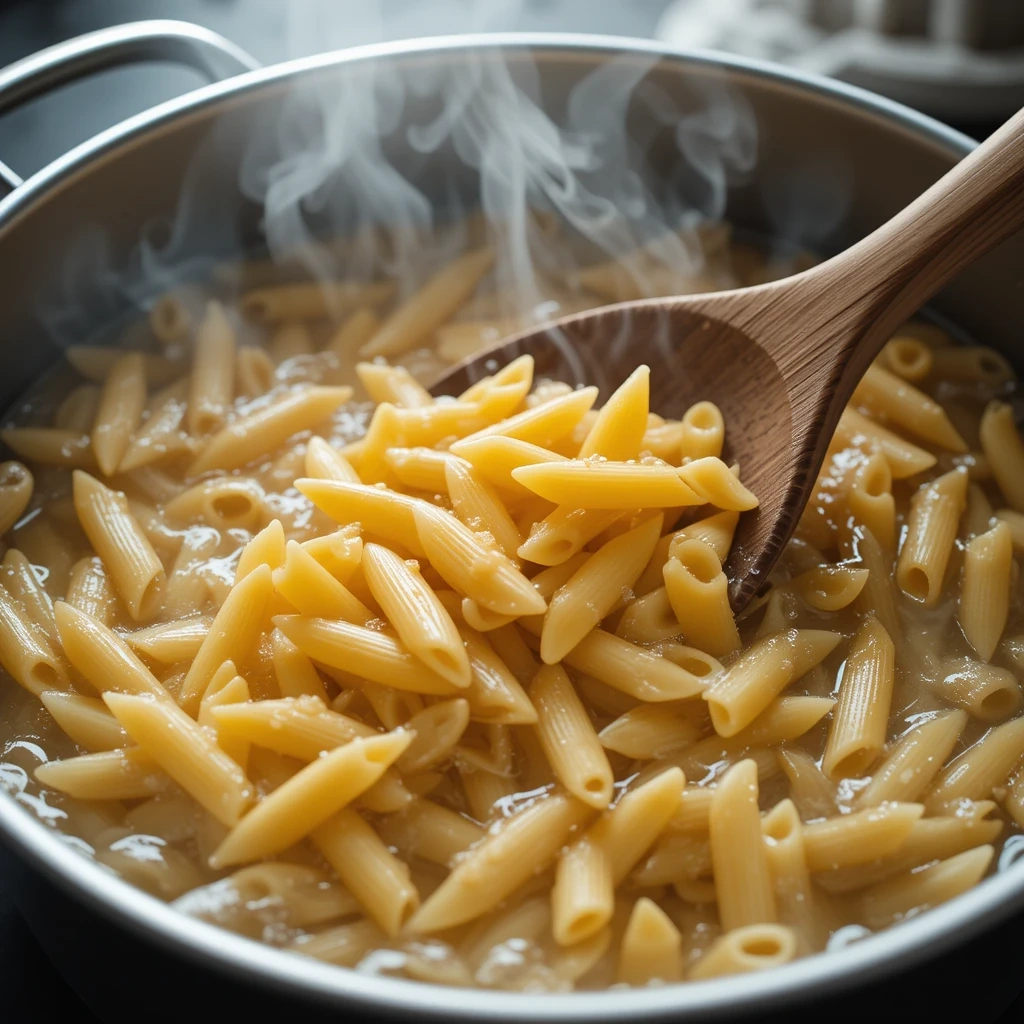
Making the Jerk Chicken Sauce
Now comes one of my favorite parts: making the jerk chicken sauce! In the same skillet used for cooking the chicken, add a bit more oil if needed and sauté chopped onions and garlic until they’re fragrant and translucent. The smell alone is enough to make anyone’s mouth water!
Then, toss in sliced bell peppers for added color and crunch. Once those veggies are softened, pour in heavy cream and stir until combined. This creamy base balances out the heat from the jerk seasoning beautifully.
If you find that your sauce is too thick, don’t hesitate to add some reserved pasta water until you reach your desired consistency. I remember one time when I got carried away with adding cream; it turned into a rich sauce that was delicious but definitely not what I had envisioned! Taste and adjust seasoning as needed before adding in your sliced jerk chicken.
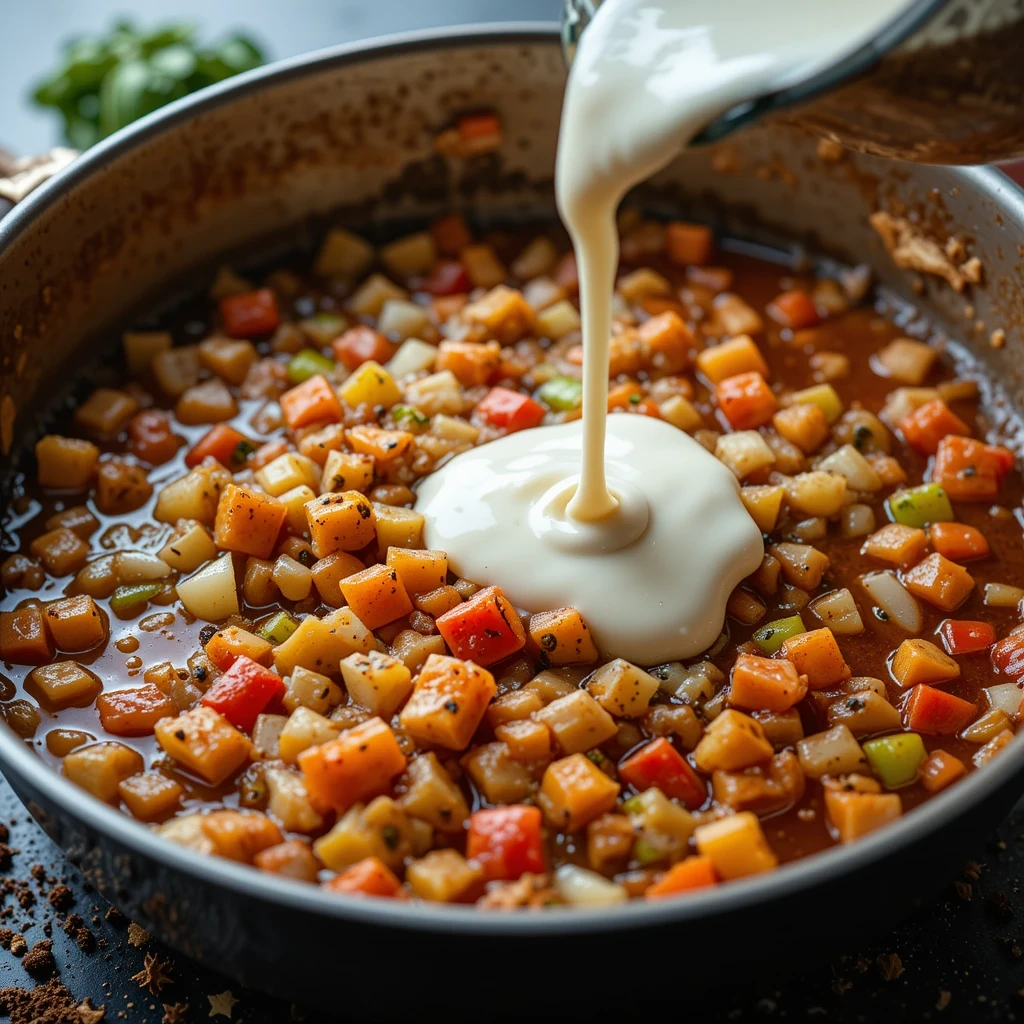
Combining the Chicken and Pasta
Combining the Components
With both components ready, it’s time to bring everything together! Add your cooked pasta directly into the skillet with the jerk chicken sauce and toss gently until every piece is coated in that creamy goodness. This step is where all those flavors meld together into something truly special.
The Magic of Flavor Combination
I often find myself getting lost in this moment—watching as each strand of pasta absorbs that vibrant sauce reminds me of how cooking can be such an art form. If you want to take it up a notch, consider adding some fresh herbs or even a squeeze of lime juice for brightness right before serving. The combination of flavors is nothing short of magical; it’s like a party in your mouth!
Final Touches
Make sure everything is heated through before plating up.
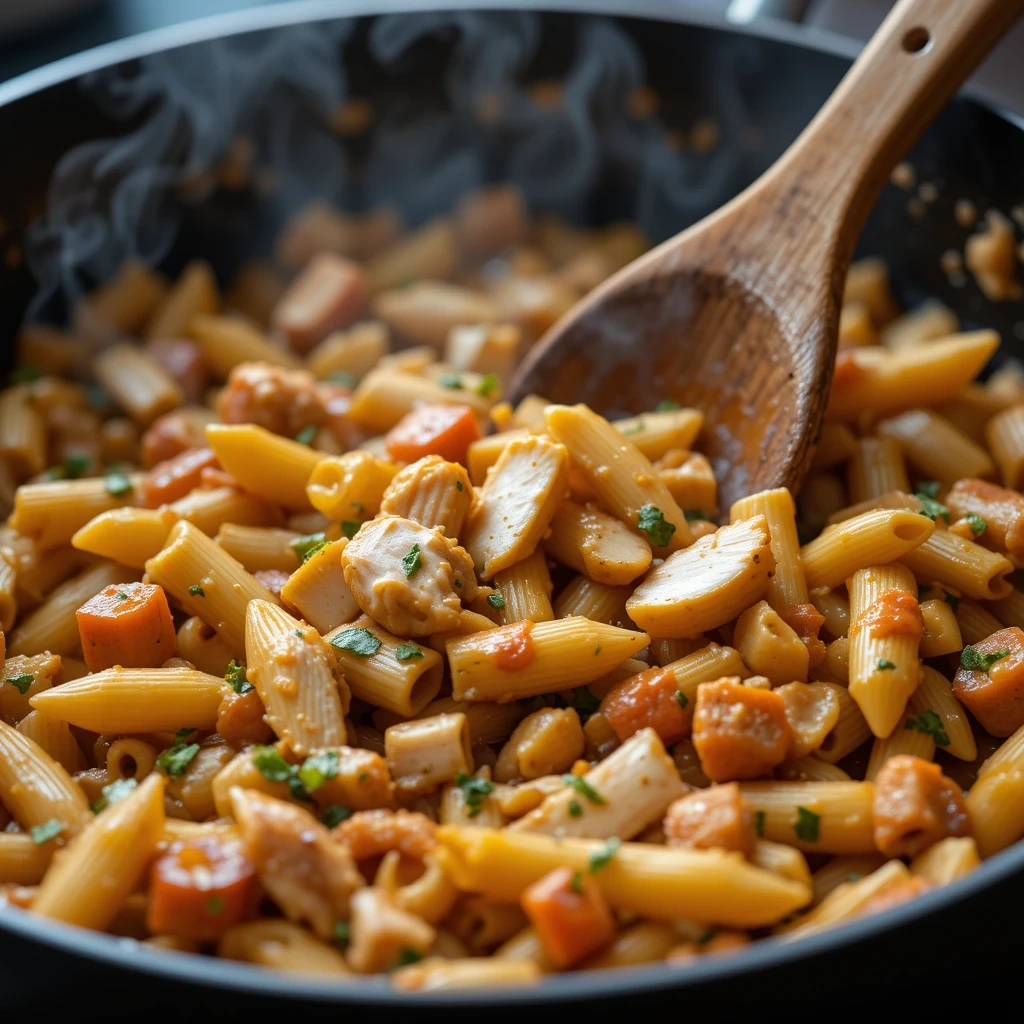
Serving and Garnishing
Now that your ultimate jerk chicken pasta is ready, it’s time to serve! I love plating this dish in large bowls, allowing everyone to dig in family-style. A sprinkle of freshly chopped cilantro or parsley on top adds a pop of color and freshness that elevates the presentation.
Sometimes, I even add a few slices of lime on the side for those who enjoy an extra zing. As I serve this dish to friends or family, I can’t help but feel proud of what I’ve created. It’s not just about feeding people; it’s about sharing an experience and bringing everyone together over good food.
The smiles on their faces as they take their first bites are worth every minute spent in the kitchen.
5 Common Mistakes to Avoid and Their Solutions
Even though making jerk chicken pasta can be straightforward, there are common pitfalls that can trip up even seasoned cooks. One mistake I made early on was not marinating the chicken long enough; this resulted in less flavorful meat. To avoid this, aim for at least an hour of marination time—overnight if possible!
Another common error is overcooking the pasta. It’s easy to get distracted while preparing other components of the dish. To prevent mushy noodles, set a timer according to package instructions and taste-test a minute or two before they’re supposed to be done.
Using too much cream can also lead to an overly rich sauce that masks the jerk flavor instead of enhancing it. Start with less cream than you think you need; you can always add more if necessary. Additionally, forgetting to reserve pasta water can leave you with a dry dish lacking cohesion.
Always remember that little cup of starchy goodness—it can make all the difference! Lastly, neglecting garnishes can make your dish look flat and uninviting. A sprinkle of fresh herbs or a squeeze of citrus can elevate both flavor and presentation significantly.
By keeping these tips in mind and learning from my past experiences, you’ll be well on your way to mastering jerk chicken pasta!
FAQs
What is jerk chicken pasta?
Jerk chicken pasta is a flavorful and spicy dish that combines the traditional Jamaican jerk chicken with pasta. It is a fusion of Caribbean and Italian cuisines, creating a unique and delicious meal.
What are the ingredients needed to make jerk chicken pasta?
The ingredients needed to make jerk chicken pasta include chicken thighs, jerk seasoning, pasta, bell peppers, onion, garlic, coconut milk, chicken broth, and a variety of spices and seasonings.
How do you prepare the jerk chicken for the pasta?
To prepare the jerk chicken for the pasta, you will need to marinate the chicken thighs in jerk seasoning for at least 30 minutes. Then, you can either grill or pan-fry the chicken until it is cooked through and has a nice charred exterior.
What is the process for cooking the pasta for jerk chicken pasta?
Cook the pasta according to the package instructions, making sure to salt the water generously. Once the pasta is al dente, drain it and set it aside while you prepare the jerk chicken sauce.
How do you make the jerk chicken sauce for the pasta?
To make the jerk chicken sauce, sauté bell peppers, onions, and garlic in a pan until they are soft. Then, add coconut milk, chicken broth, and additional jerk seasoning to the pan and let the sauce simmer until it thickens slightly.
What is the final step in making jerk chicken pasta?
The final step in making jerk chicken pasta is to combine the cooked pasta with the jerk chicken sauce, tossing everything together until the pasta is well coated. Then, add the cooked jerk chicken to the pasta and mix everything together.
How should jerk chicken pasta be served and garnished?
Jerk chicken pasta can be served hot, garnished with fresh chopped cilantro, green onions, and a squeeze of lime juice for added flavor.
What are 5 common mistakes to avoid when making jerk chicken pasta?
Five common mistakes to avoid when making jerk chicken pasta include overcooking the chicken, not seasoning the pasta water, using too much jerk seasoning, not allowing the sauce to thicken, and not properly combining the chicken and pasta.
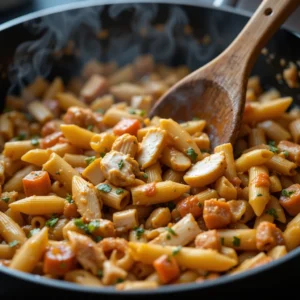
jerk chicken pasta
Ingredients
- Boneless chicken thighs or breasts
- Jerk seasoning store-bought or homemade
- Pasta penne or fettuccine
- Heavy cream
- Garlic
- Onion
- Bell peppers
- Fresh herbs cilantro or parsley
- Salt and pepper
- Lime optional
- Pros:
- Bold and spicy flavor
- Combines Caribbean and Italian cuisines
- Versatile and can be customized
- Impressive for dinner parties
- Can be made with store-bought or homemade jerk seasoning
- Cons:
- Can be too spicy for some
- Requires multiple steps
- Can be high in calories
Instructions
- Marinate the chicken in jerk seasoning for at least 1 hour (or overnight).
- Cook pasta according to package directions until al dente, reserving some pasta water.
- Grill or pan-sear chicken until cooked through and charred. Let rest, then slice.
- Sauté onions, garlic, and bell peppers in the same skillet.
- Add heavy cream and simmer until slightly thickened, adding pasta water if needed.
- Add sliced jerk chicken to the sauce.
- Add cooked pasta to the skillet and toss to coat.
- Serve hot, garnished with fresh herbs and lime wedges (optional).


3 thoughts on “Jerk Chicken Pasta Recipe: A Spicy and Creamy Delight You’ll Love”